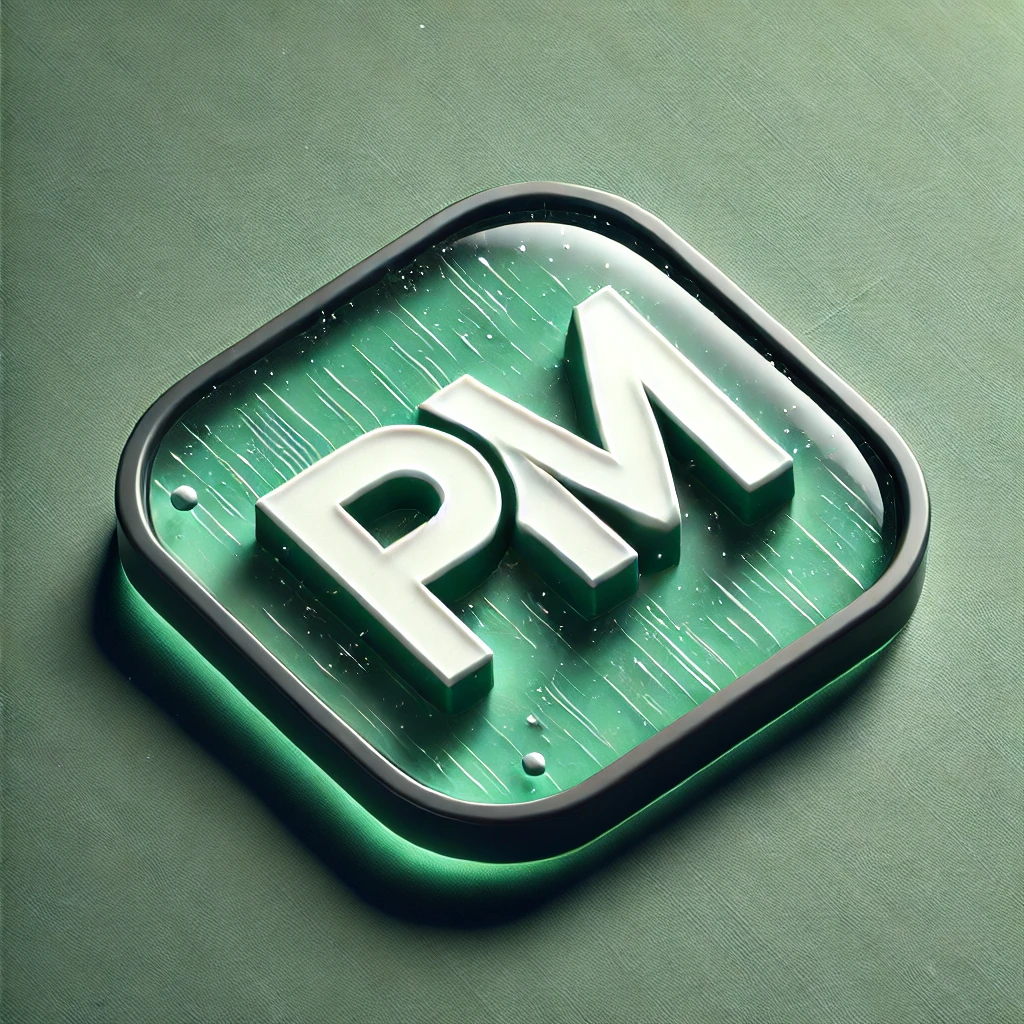Polyurethane is a versatile material used in many products. It can be found in furniture, insulation, shoes, automotive parts, coatings, adhesives, and sealants.
Polyurethane is a versatile type of plastic that comes in various forms, including rigid foams, flexible foams, chemical-resistant coatings, sealants, adhesives, and elastomers. It is synthesized by reacting a polyol (an alcohol with more than two reactive hydroxyl groups per molecule) with a diisocyanate or a polymeric isocyanate in the presence of suitable catalysts and additives. The unique chemical structure of polyurethane allows it to be engineered in a wide range of stiffness, hardness, and densities, offering significant flexibility in its applications. Polyurethane's unique properties make it suitable for a wide range of applications across various industries. Here are some of the common uses of polyurethane: This list is not exhaustive, as the versatility of polyurethane continues to open up new applications and possibilities across different sectors.Polyurethane and Its Applications
What is Polyurethane?
Where Can Polyurethane Be Used?
What is the historical significance of the uses of polyurethane?
Polyurethane, a versatile polymer, has played a significant role in various industries since its invention in the 20th century. Its journey through history is a testament to human ingenuity in materials science, shaping how we live, work, and interact with our environment. This article explores the historical place of polyurethane and its widespread applications. The story of polyurethane begins in the late 1930s, with the work of German chemist Otto Bayer and his colleagues. They were searching for a new polymer that could be used to make fibers, coatings, and elastomers. The result was polyurethane, a new type of plastic that was initially used during World War II for military applications such as aircraft coatings and submarine insulation. After the war, the potential of polyurethane expanded rapidly. It began to be used in a variety of commercial applications, from flexible foam in furniture and automotive seats to rigid foams for insulation in buildings and refrigerators. Its versatility, durability, and ease of use made it an attractive material for many industries. Today, polyurethane's applications are vast and varied. It is used in the manufacture of a wide range of products, including footwear, automotive parts, adhesives, sealants, and coatings. Its role in the construction industry cannot be overstated, providing insulation, structural support, and waterproofing solutions. Moreover, advances in polyurethane technology have led to the development of more sustainable, eco-friendly formulations, reflecting a growing commitment to environmental stewardship. The historical place of polyurethane is firmly rooted in its ability to adapt and evolve to meet the needs of society. From its early military applications to its modern-day uses in virtually every industry, polyurethane has demonstrated its versatility and utility. As we continue to innovate and seek sustainable solutions, the role of polyurethane in history will undoubtedly continue to grow and evolve.The Role of Polyurethane in History
Early Development
Post-War Expansion
Modern Applications
Conclusion
Polyurethane is a versatile material used in various applications due to its unique properties. It can be found in: 1. Insulation and construction materials, such as spray foam and sealants, due to its excellent thermal insulation properties. 2. Furniture and bedding, including mattresses and cushions, because of its comfort and durability. 3. Automotive parts, like seat cushions, interior trim, and in the manufacturing of tires, thanks to its resistance to wear and tear. 4. Footwear, particularly in soles, for its cushioning and durability. 5. Coatings and adhesives, providing strong, durable finishes for floors, wood, and metal surfaces. 6. Medical devices and supplies, such as catheters and surgical drapes, because it can be made biocompatible. 7. Textiles and apparel, using it in elastane fibers (spandex) for stretchability. Polyurethane's properties include flexibility, durability, resistance to abrasion and chemicals, and its ability to be molded into different shapes, making it suitable for a wide range of applications.
Polyurethane is a versatile type of plastic that can be found in many forms - from rigid foams to soft elastomers. It is made by reacting a polyol (alcohol with more than two reactive hydroxyl groups per molecule) with a diisocyanate or a polymeric isocyanate in the presence of suitable catalysts and additives. Polyurethane's properties vary significantly depending on its formulation and the method of manufacture. However, some general properties include: Thanks to its versatile properties, polyurethane can be used in a wide range of applications, including:Polyurethane: Uses and Properties
What is Polyurethane?
Properties of Polyurethane
Where Can Polyurethane Be Used?
Where can polyurethane be used? Decoration.
Polyurethane is a versatile material that has become indispensable in various industries due to its unique properties. Its flexibility, durability, and resistance to abrasion, temperature, and chemicals make it suitable for a wide range of applications. Below, we explore the diverse usage areas of polyurethane, particularly focusing on its role in decoration. In the automotive sector, polyurethane is used in the manufacturing of comfortable, durable seats, energy-absorbing foam for safety, and in exterior parts such as bumpers and fenders, which require materials that can withstand harsh conditions. Polyurethane plays a crucial role in construction, offering solutions for insulation, flooring, and roofing. Its excellent insulation properties help in reducing energy consumption, making buildings more energy-efficient. Due to its comfort and durability, polyurethane foam is a popular choice for furniture and mattresses. It provides the right balance of softness and support, enhancing the quality of sofas, chairs, and beds. Lightweight and durable, polyurethane is used in the soles of shoes to provide cushioning and support, making footwear more comfortable and long-lasting. When it comes to decoration, polyurethane finds its place in a variety of applications. It is used in the manufacturing of decorative moldings, frames, and panels that mimic the look of wood or stone but at a lower cost and with greater durability. Polyurethane decorations are easy to install, maintain, and are resistant to wear, making them an excellent choice for both interior and exterior designs. In conclusion, the usage areas of polyurethane are vast and varied, stretching from industrial applications to everyday products, including decoration. Its adaptability and resilience make it a preferred material in many fields, proving that polyurethane is much more than just a component; it's a solution to numerous design and manufacturing challenges.Where Can Polyurethane Be Used?
Automotive Industry
Construction
Furniture and Bedding
Footwear
Decoration
Polyurethane is a versatile material used in various applications, including foam insulation for buildings and refrigerators, automotive parts, furniture, footwear, and coatings for floors and furniture.
Polyurethane is a highly versatile material known for its durability, flexibility, and resistance to abrasion and chemicals. This makes it an ideal choice for a wide range of applications across various industries. From everyday household items to critical components in the automotive and aerospace sectors, polyurethane's adaptability cannot be overstated. Due to its unique properties, polyurethane can be used in numerous applications, including but not limited to: Polyurethane comes in various forms and models, tailored to specific applications. These include:Polyurethane: Versatile Applications and Models
Where Can Polyurethane Be Used?
Models of Polyurethane
Yes, polyurethane can be used on exterior walls.
Polyurethane is a versatile material widely used in various applications, including insulation, finishes, and protective coatings. Its durability and resistance to environmental factors make it an excellent choice for exterior walls. Polyurethane can be applied in several forms, such as liquid, foam, or solid, depending on the specific requirements of the application. One of the primary uses of polyurethane on exterior walls is insulation. Polyurethane foam insulation can significantly reduce energy consumption by maintaining a consistent indoor temperature, making it an eco-friendly option. This type of insulation is known for its high thermal resistance, which can lead to savings on heating and cooling costs. Polyurethane coatings can protect exterior walls from various elements, including UV radiation, moisture, and temperature fluctuations. These coatings are applied as a liquid and then harden, forming a durable, weather-resistant layer. They can also enhance the aesthetic appeal of buildings by providing a smooth, finished surface that can be tinted in various colors. Waterproofing is another critical application of polyurethane on exterior walls. Polyurethane sealants can fill cracks and gaps, preventing water infiltration which can lead to mold growth and structural damage. This makes polyurethane an essential material for buildings in areas prone to heavy rain or flooding. In conclusion, polyurethane can be used on exterior walls for insulation, protective coatings, and waterproofing. Its versatility, durability, and resistance to environmental factors make it a preferred choice for many construction and renovation projects. By choosing polyurethane for exterior walls, homeowners and builders can ensure a long-lasting, energy-efficient, and aesthetically pleasing outcome.Uses of Polyurethane on Exterior Walls
Insulation
Protective Coatings
Waterproofing
Conclusion
Yes, polyurethane can be painted.
Polyurethane is a versatile material used in a wide range of applications, from furniture and flooring to automotive parts. One of the questions that often arises is whether polyurethane can be painted. The answer is yes, but there are specific steps and considerations to ensure the paint adheres well and the finish lasts. Before painting over polyurethane, the surface needs to be properly prepared. Start by cleaning the surface to remove any grease, dirt, or dust. Then, lightly sand the polyurethane finish with fine-grit sandpaper to create a rougher surface that the paint can adhere to. Wipe away any dust from sanding before proceeding to the next step. When painting over polyurethane, it's crucial to select the right type of paint. Water-based acrylic paints are a good choice because they adhere well to polyurethane and dry quickly. However, oil-based paints can also be used if a more durable finish is desired. Whichever type of paint you choose, make sure it is compatible with polyurethane and suitable for the object you're painting. Apply the paint using a brush, roller, or sprayer, depending on the size of the object and the type of finish you want. For best results, apply multiple thin coats of paint, allowing each coat to dry thoroughly before applying the next. This will help prevent drips and ensure a smooth, even finish. With proper preparation and the right materials, painting over polyurethane is not only possible but can also produce excellent results. Whether you're updating furniture, floors, or any other polyurethane-coated surface, a fresh coat of paint can breathe new life into your items and help them match your current decor.Can Polyurethane Be Painted?
Preparation is Key
Choosing the Right Paint
Applying the Paint
Final Thoughts
Applying Polyurethane and Its Uses To apply polyurethane, follow these steps: 1. Prepare the surface by sanding it smooth. 2. Clean off any dust. 3. Apply a thin coat of polyurethane using a brush or cloth. 4. Let it dry completely. 5. Sand it lightly, then clean off the dust. 6. Apply another coat. 7. Repeat the process for additional coats. Polyurethane can be used on: - Wood floors and furniture for protection and shine. - Doors and cabinets to prevent scratches and water damage. - Woodwork and trim for a durable finish. - Any indoor wooden surface needing a protective coating.
Polyurethane is a versatile material used in a wide range of applications, from wood finishing to insulation in buildings. Its durability and resistance to moisture, chemicals, and wear make it an ideal choice for protecting and enhancing surfaces. This article provides a guide on how to apply polyurethane and explores its various uses. Applying polyurethane can be done in a few steps, ensuring a smooth and durable finish. Here are the general steps: Polyurethane's versatility makes it suitable for a variety of applications, including:How to Apply Polyurethane and Its Applications
Introduction
How to Apply Polyurethane
Where Can Polyurethane Be Used?
Polyurethane and Styrofoam are both plastics used in various applications. Polyurethane is versatile, used in making foam insulation, furniture, car parts, and coatings. Styrofoam, a brand name for expanded polystyrene, is mainly used for insulation, packaging, and disposable food containers.
Polyurethane and Styrofoam are two widely used materials in various industries, each with its unique properties and applications. Polyurethane is a versatile polymer that can be either rigid or flexible, making it suitable for a wide range of products, including foam insulation, furniture, automotive parts, and coatings. It is known for its durability, resistance to temperature changes, and chemical resistance. Styrofoam, on the other hand, is a trademarked brand of closed-cell extruded polystyrene foam (XPS) commonly used for thermal insulation and craft applications. It is lightweight, has excellent insulation properties, and is relatively inexpensive. However, it is not as durable as polyurethane and can be more susceptible to damage from solvents and UV light. Polyurethane finds applications in various fields due to its versatility. It is extensively used in: Styrofoam's applications are primarily focused on its insulation properties and lightweight nature. It is commonly used in:Differences and Uses of Polyurethane and Styrofoam
Differences between Polyurethane and Styrofoam
Where Can Polyurethane Be Used?
Where Can Styrofoam Be Used?
Polyurethane is a versatile material used in a wide range of applications, such as in foams for mattresses, upholstered furniture, car parts, coatings, adhesives, and sealants. It is also used in building insulation, as a wood finish, and in footwear.
Polyurethane and plaster are widely used materials in the construction and manufacturing industries, each with its unique properties and applications. Understanding the differences between these materials can help in selecting the right one for specific projects. Polyurethane is a versatile polymer composed of organic units joined by carbamate (urethane) links. It can be manufactured in various forms, including rigid and flexible foams, elastomers, and solid materials. Polyurethane's versatility comes from its ability to be tailored for hardness, density, and elasticity, making it suitable for a wide range of applications. Plaster is a building material used for the protective or decorative coating of walls and ceilings and for moulding and casting decorative elements. It is made by heating gypsum to about 150°C. When water is added, it forms a malleable paste that hardens as it dries. In summary, polyurethane and plaster serve distinct purposes and are chosen based on the specific requirements of a project. Polyurethane is favored for its versatility and durability in various industrial applications, while plaster is preferred for its aesthetic and functional properties in construction and art. Understanding the characteristics and applications of each material ensures their effective and efficient use in various projects.Differences and Applications of Polyurethane and Plaster
Introduction
What is Polyurethane?
Applications of Polyurethane
What is Plaster?
Applications of Plaster
Conclusion
Polyurethane precast is made from a type of plastic that's lightweight and can mimic different materials. GRC precast, or Glass Reinforced Concrete, is a mixture of cement and glass fibers, making it stronger and more durable.
The construction industry has various materials at its disposal, each with unique properties and applications. Two such materials are polyurethane precast and Glassfibre Reinforced Concrete (GRC) precast. While both serve in creating durable, design-flexible building components, they differ significantly in composition, properties, and applications. Polyurethane Precast is made from a type of polymer composed of organic units joined by carbamate (urethane) links. The versatility of polyurethane chemistry allows for a wide range of hardness, density, and flexibility levels, making it suitable for various applications. GRC Precast, on the other hand, is a composite material consisting of cement, fine aggregates, water, chemical admixtures, and alkali-resistant glass fibres. The glass fibres act as reinforcement, providing strength and durability to the concrete. Polyurethane Precast is renowned for its exceptional durability, high strength-to-weight ratio, and resistance to weather, chemicals, and abrasion. These properties make it ideal for manufacturing decorative elements, architectural detailing, and industrial components that require precision and durability. GRC Precast is appreciated for its high strength, ability to be molded into thin, lightweight panels, and environmental resistance. It's commonly used in exterior building facades, architectural cladding, and ornamental features, offering both aesthetic appeal and structural functionality. In conclusion, while both polyurethane precast and GRC precast are valuable in the construction industry, their distinct characteristics make them suitable for different applications. Polyurethane precast is preferred for lightweight, high-precision components, whereas GRC precast is favored for large-scale, durable, and aesthetic architectural elements.Difference Between Polyurethane Precast and GRC Precast
Composition
Properties and Applications
Conclusion
Polyurethane can be used in various applications including furniture, footwear, automotive interiors, insulation materials, and coatings. Prices vary depending on the product and its specific use.
Polyurethane is a versatile material used in a wide range of applications due to its unique properties such as flexibility, durability, and resistance to abrasion and chemicals. Here are some common uses of polyurethane: As for the prices of polyurethane, they can vary significantly depending on the form (e.g., foam, coatings, adhesives), quality, and quantity purchased. Generally, prices range from a few dollars per pound for basic polyurethane foam to several hundred dollars per gallon for specialized coatings or adhesives. It's important to consult with suppliers or manufacturers for specific pricing based on your needs.Uses and Prices of Polyurethane
 English
English
 Türkçe
Türkçe




